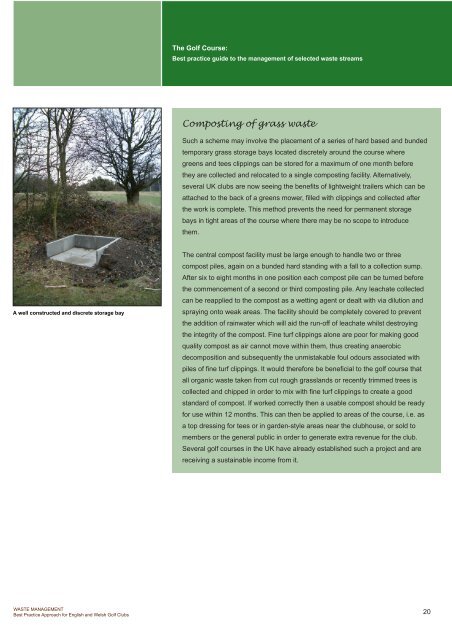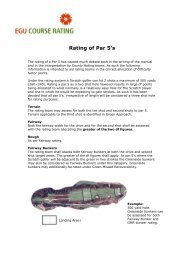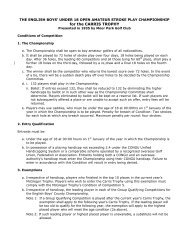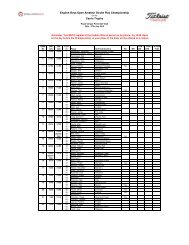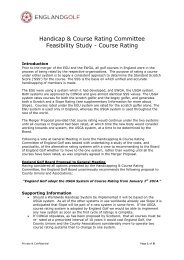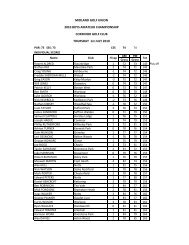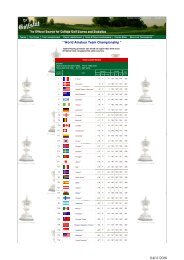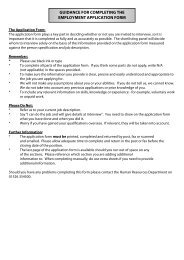Waste management - England Golf
Waste management - England Golf
Waste management - England Golf
Create successful ePaper yourself
Turn your PDF publications into a flip-book with our unique Google optimized e-Paper software.
The <strong>Golf</strong> Course:<br />
Best practice guide to the <strong>management</strong> of selected waste streams<br />
Composting of grass waste<br />
Such a scheme may involve the placement of a series of hard based and bunded<br />
temporary grass storage bays located discretely around the course where<br />
greens and tees clippings can be stored for a maximum of one month before<br />
they are collected and relocated to a single composting facility. Alternatively,<br />
several UK clubs are now seeing the benefits of lightweight trailers which can be<br />
attached to the back of a greens mower, filled with clippings and collected after<br />
the work is complete. This method prevents the need for permanent storage<br />
bays in tight areas of the course where there may be no scope to introduce<br />
them.<br />
A well constructed and discrete storage bay<br />
The central compost facility must be large enough to handle two or three<br />
compost piles, again on a bunded hard standing with a fall to a collection sump.<br />
After six to eight months in one position each compost pile can be turned before<br />
the commencement of a second or third composting pile. Any leachate collected<br />
can be reapplied to the compost as a wetting agent or dealt with via dilution and<br />
spraying onto weak areas. The facility should be completely covered to prevent<br />
the addition of rainwater which will aid the run-off of leachate whilst destroying<br />
the integrity of the compost. Fine turf clippings alone are poor for making good<br />
quality compost as air cannot move within them, thus creating anaerobic<br />
decomposition and subsequently the unmistakable foul odours associated with<br />
piles of fine turf clippings. It would therefore be beneficial to the golf course that<br />
all organic waste taken from cut rough grasslands or recently trimmed trees is<br />
collected and chipped in order to mix with fine turf clippings to create a good<br />
standard of compost. If worked correctly then a usable compost should be ready<br />
for use within 12 months. This can then be applied to areas of the course, i.e. as<br />
a top dressing for tees or in garden-style areas near the clubhouse, or sold to<br />
members or the general public in order to generate extra revenue for the club.<br />
Several golf courses in the UK have already established such a project and are<br />
receiving a sustainable income from it.<br />
WASTE MANAGEMENT<br />
Best Practice Approach for English and Welsh <strong>Golf</strong> Clubs<br />
20


